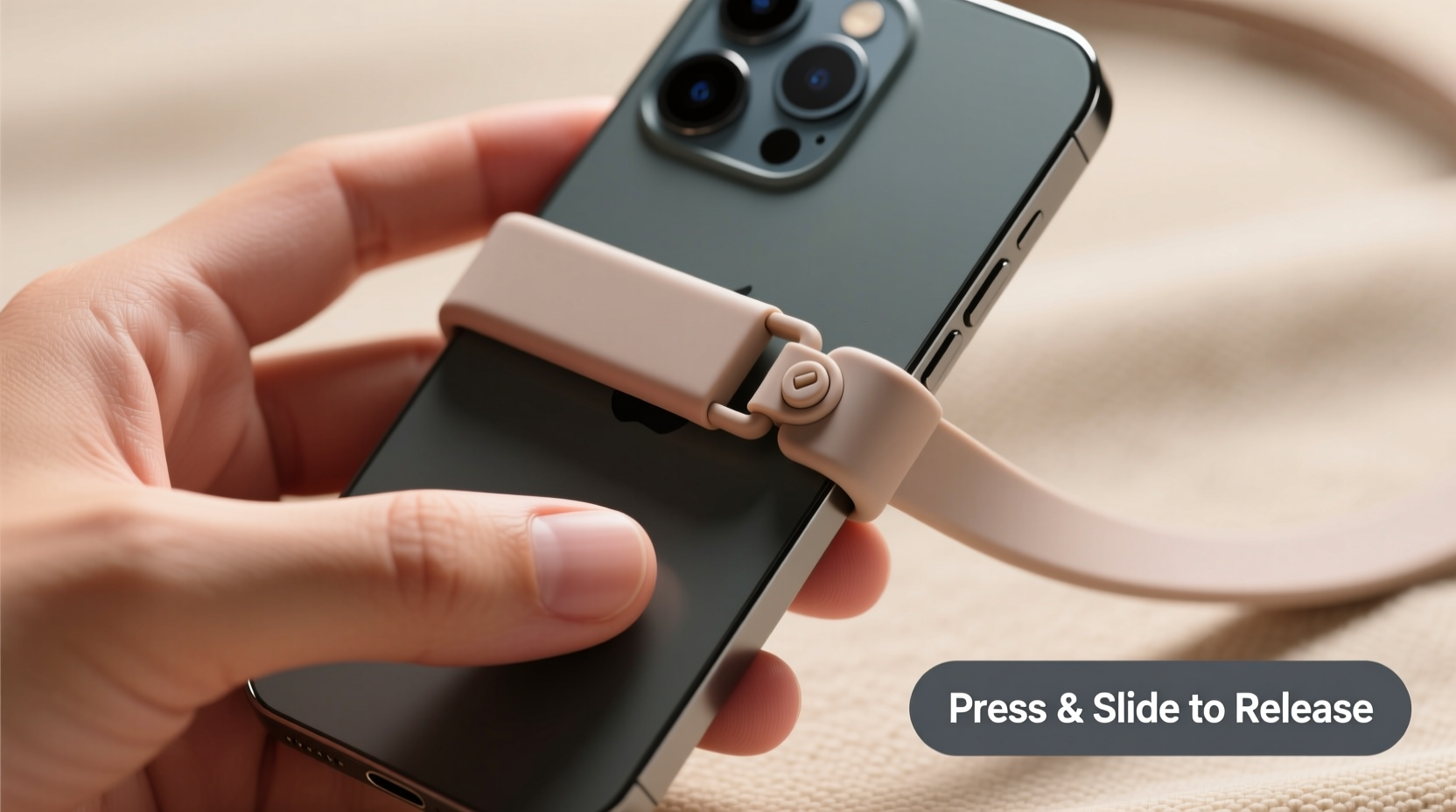In today’s mobile-first world, many users rely on wristband lanyards to keep their phones secure during travel, outdoor activities, or crowded events. While these accessories offer peace of mind, there comes a time when you may need to remove or replace the lanyard—whether due to wear, style change, or repair. However, improper removal can lead to scratches, port damage, or even compromise structural integrity, especially with tightly integrated designs. Knowing the correct method ensures your device stays protected while maintaining the longevity of both your phone and its accessories.
Understanding Your Lanyard Attachment Type

Before attempting removal, it's essential to identify how your lanyard is connected. Not all attachment methods are the same, and using force where finesse is needed can result in costly mistakes. The most common types include:
- Hole-based loops: Found on cases with a small cutout near the corner, allowing a strap to be threaded through.
- Carabiner or clip-on systems: These attach via a metal or plastic clasp to a ring or loop on the case or phone.
- Magnetic connectors: Used in premium accessories, often involving a magnetic disc adhered to the back of the phone or case.
- Built-in wrist straps: Some rugged cases have permanently molded or sewn-in bands that require partial disassembly.
Identifying your system prevents unnecessary stress on components. For example, pulling hard on a magnetic connector might seem harmless, but repeated strain could loosen adhesive over time.
Step-by-Step Guide to Safe Removal
Follow this structured approach based on your attachment type to ensure safe detachment:
- Power down your device (optional but recommended): Though not always necessary, turning off your phone reduces risk during handling, particularly if working near ports or buttons.
- Clean the area: Wipe around the attachment point with a dry microfiber cloth to remove dust or debris that could interfere with smooth removal.
- For hole-threaded lanyards: Gently pull one end of the strap through the loop. If it’s knotted, use a fine tool like a paperclip or tweezers to carefully loosen the knot without scratching the surface.
- For clip-on systems: Unhook the carabiner or clasp from the ring. Do not twist or pry—this can deform metal rings or crack plastic mounts.
- For magnetic attachments: Slide the magnetic piece sideways rather than pulling straight off. This shearing motion reduces adhesive strain and preserves bond strength for future use.
- Inspect after removal: Check the phone, case, and lanyard for signs of fraying, warping, or residue. Clean adhesive spots with isopropyl alcohol (70%) applied via cotton swab—never directly on the device.
Patience is critical. Rushing increases the likelihood of slipping and causing unintended damage.
Do’s and Don’ts: A Quick Reference Table
| Action | Do | Don’t |
|---|---|---|
| Removing knots | Use a fine tool gently | Cut with scissors near the phone |
| Detaching magnets | Slide sideways | Pull straight off forcefully |
| Cleaning residue | Dab with alcohol on a swab | Soak or spray liquid onto device |
| Storing detached parts | Keep in labeled pouch | Leave loose in pocket or drawer |
Real-World Example: Avoiding Costly Damage
A freelance photographer in Seattle used a lanyard to secure her smartphone while documenting street festivals. After months of use, the nylon strap began fraying near the base. Attempting a quick swap, she pulled the old band out sharply from the case’s side loop, unaware it had been double-knotted internally. The sudden force cracked the polycarbonate housing, creating a hairline fissure that eventually led to moisture ingress during a rainy shoot. Repair costs exceeded $120—far more than the price of a new case. Had she taken five extra minutes to examine and gently untie the knot, the damage would have been avoidable.
This scenario underscores why technique matters as much as intent. Small actions compound into long-term outcomes.
“Many warranty claims we see stem from accessory misuse, not manufacturing defects. Proper detachment practices preserve both function and form.” — Dr. Lena Torres, Senior Device Integrity Analyst at MobileShield Labs
Checklist: Safe Lanyard Removal Protocol
Use this checklist before every removal to minimize risk:
- ☑ Identify the attachment mechanism
- ☑ Power off the phone (if sensitive work is involved)
- ☑ Clean the surrounding area
- ☑ Use appropriate tools (tweezers, paperclip, swab)
- ☑ Apply gentle, controlled force only
- ☑ Inspect both phone and lanyard post-removal
- ☑ Store components safely for reuse or replacement
Print or bookmark this list for quick reference, especially if multiple users share the device.
Frequently Asked Questions
Can removing a lanyard void my phone’s warranty?
Generally, no—if done correctly and without modifying internal components. However, visible damage caused by forced removal (e.g., cracked casing, torn ports) may be deemed user-inflicted and excluded from coverage. Always follow manufacturer guidelines when handling accessories.
What should I do if the lanyard is glued inside the case?
Some third-party rugged cases integrate straps with adhesive backing. In such cases, slowly peel the glue joint using a plastic opening tool. Apply heat from a hairdryer (low setting, 15 cm away) for 10–15 seconds to soften the bond. Never use sharp blades near the phone.
Is it safe to reuse a magnetic lanyard adapter?
Yes, provided the adhesive remains intact and the surface is clean. Most high-quality magnetic discs support multiple applications. Replace the adhesive pad every 6–12 months or when slippage occurs.
Final Thoughts and Recommendations
Removing a phone wristband lanyard may seem trivial, but doing so improperly risks more than just cosmetic blemishes—it can affect durability, resale value, and daily usability. By understanding your device’s design, using deliberate motions, and respecting material limits, you maintain control over your tech’s lifespan. Whether upgrading to a new strap, switching cases, or performing maintenance, treat each detachment as an opportunity to practice mindful care.









 浙公网安备
33010002000092号
浙公网安备
33010002000092号 浙B2-20120091-4
浙B2-20120091-4
Comments
No comments yet. Why don't you start the discussion?